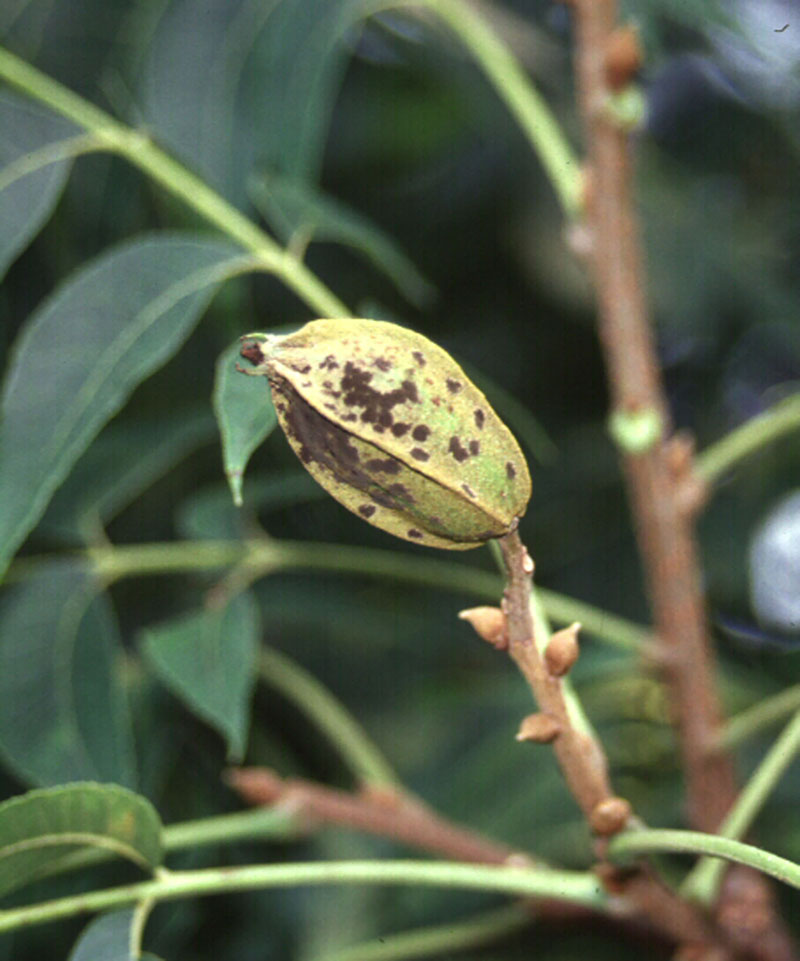
By Clint Thompson
Persistent rainfall in the Southeast means added moisture for the region’s pecan trees. It also means increased risk of scab disease, especially in trees that are more susceptible than others.
Lenny Wells, University of Georgia (UGA) Extension pecan specialist, discussed the dangers of consistent rainfall.
“If (the rains) come in the afternoon and the trees stay wet all night, that’s perfect conditions for scab,” Wells said. “We certainly need some non-rainy days so we can get the fungicide on there to protect them.”
Scab is a fungal disease that infects the leaves or nuts of pecan trees. If scab impacts the nut early enough in the production season, it can cause the nut to blacken and fall from the tree. It excels on trees that have received moisture, which has been the case for growers in Alabama and Georgia.

According to the most recent release of the U.S. Drought Monitor, there are zero dry conditions in both states. They have sufficient moisture. As a result, growers need to be diligent with their fungicide applications. Some producers will make at least 10 fungicide applications during an average year to manage the disease.
Growers need to be more frequent with their applications to counter the frequency of the rainfall.
“We’ve hit the time of the season where you don’t need to go more than two weeks on susceptible varieties no matter what, and in most cases, where they’ve been getting rains like we’ve been seeing in some areas, really frequently, they’re going to need to tighten that up to 10 days or in some cases I’ve seen seven days,” Wells said. “It just depends on how much rain they’re getting or how often they’re getting rain.”
Wells continues to tout scab resistant varieties amid rainy summers like this one. Wells is high on varieties like Avalon, Creek and Lakota.
“You’ve got a lot more cushion if you’re growing a non-susceptible variety,” Wells said.










